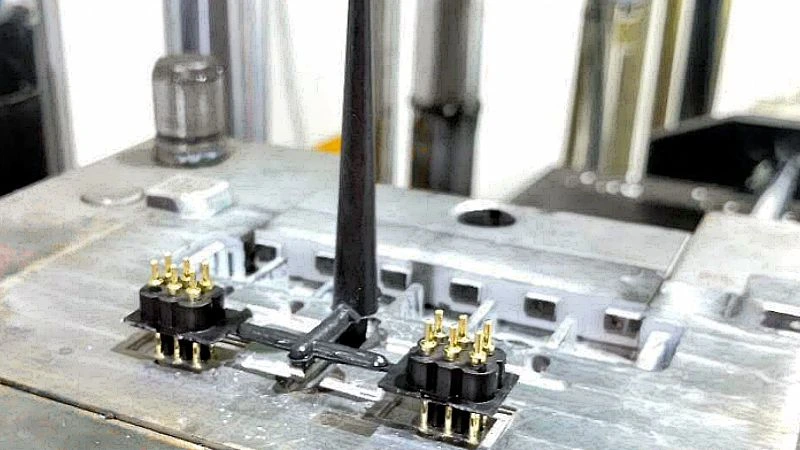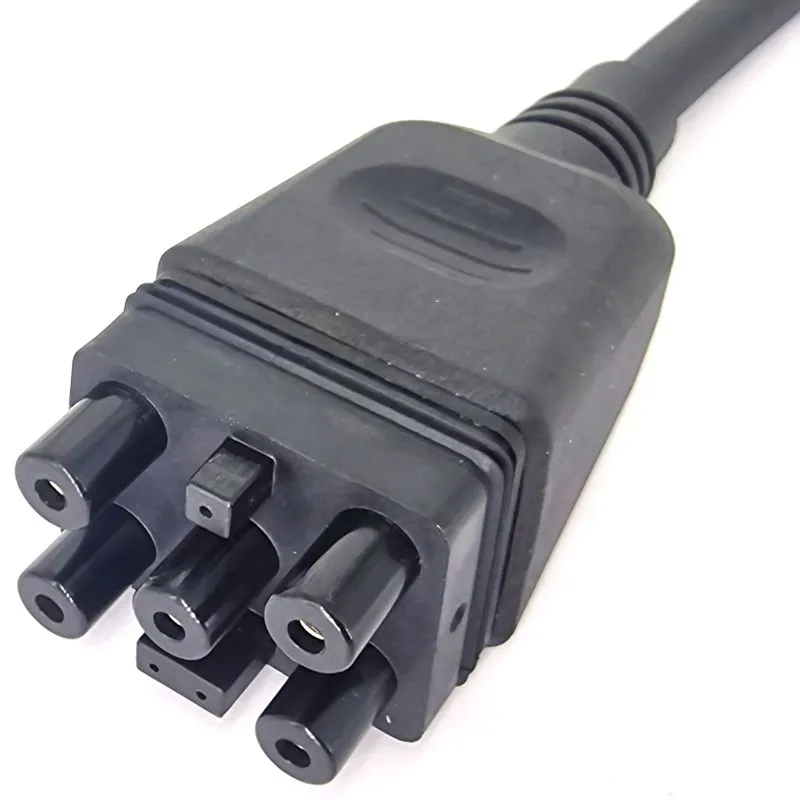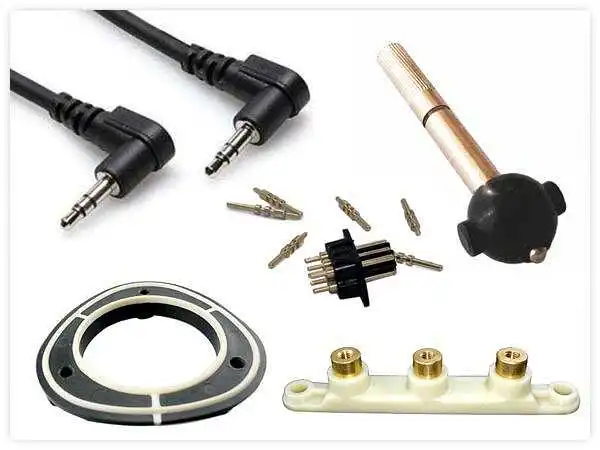Our Insert Molding and Over Molding Services:
- Connectors: Overmolded electric cables with connectors
- Grommets: Molding grommets and strain relief to electric cables
- Cable splits: Encapsulating split cables
- Insert molding metal contacts
- Molding magnetic connectors
- Insert molding pogo pins
Printed circuit overmolding is a very specific process. It requires experience and the right equipment.
Materials used: TPE, TPU, PP
What are insert molding and overmolding?
Insert Molding:
Insert molding is an advanced manufacturing process that involves the integration of metal or other supplementary components into a plastic part during the molding process. This technique enhances the structural integrity, functionality, and performance of the final product.
The process initiates with the creation of a mold, which serves as the negative form for the desired plastic product. Prior to injecting the plastic material, a metal insert is strategically placed within the mold. This insert could range from threaded fasteners to complex metal components, depending on the intended purpose of reinforcement or additional features.
The actual molding process commences with the injection of molten plastic into the mold, enveloping and encapsulating the inserted metal component. The plastic adheres tightly to the insert, creating a composite structure as it cools and solidifies. This integration results in a product that inherits the benefits of both plastic and metal, exhibiting enhanced strength, durability, and precision.
Applications for insert molding
Insert molding finds application in diverse industries where products require heightened mechanical properties, electrical conductivity, or intricate geometries. The strategic placement of metal inserts within the plastic matrix allows for tailored reinforcement. In this way this process ensures optimal performance in critical areas while maintaining the design flexibility inherent to plastic molding.
The advantages of insert molding are evident in products ranging from automotive components to medical devices. More specific, where the amalgamation of materials brings forth solutions that surpass the individual merits of plastic or metal alone.

Typical applications of Insert molding:
- Threaded brass and copper inserts
- Connectors and terminals
- Thumb knops and threaded knobs
- Plastic ball over metal rod
Advantages of Insert Molding:
- Enhanced Strength and Durability: Insert molding reinforces plastic parts with metal or other materials, significantly improving their mechanical strength and durability.
- Complex Geometries: The process allows for the creation of complex and intricate part geometries by incorporating metal inserts into the plastic molding, providing design flexibility.
- Cost Efficiency: By integrating multiple materials in a single production step, insert molding can reduce the overall manufacturing costs compared to traditional assembly methods.
- Streamlined Production: Insert molding streamlines the production process by combining the molding of plastic and the insertion of metal components into a single step, increasing efficiency.
- Improved Thermal Conductivity: Metal inserts can enhance the thermal conductivity of plastic parts, making insert molded components suitable for applications with specific thermal requirements.
- Weight Reduction: Despite the addition of metal, insert molding can lead to weight reduction in the final product, as it allows for the strategic placement of reinforcement where needed.
- Customization of Properties: Different types of metal inserts can be used to customize the electrical conductivity, magnetic properties, or other functional characteristics of the molded part.
- Reduced Assembly Time: Assembly time is reduced since components are integrated during the molding process, eliminating the need for subsequent assembly steps.
Over Molding:
Over molding is a manufacturing process that involves the application of a secondary layer of plastic onto an existing part. This typically enhances its aesthetics, ergonomics, or functionality. In other words, this technique allows for the creation of products with multi-material compositions, combining the benefits of different materials in a single component.
The process begins with the placement of the preformed base component into a secondary mold designed for over molding. This base component, often made of rigid plastic, is then subjected to a second injection of molten plastic, forming a cohesive bond between the two materials as it cools.
Overmolding for creative minds
Over molding enables the creation of products with diverse textures, colors, and material properties within a single part. Common applications include tool handles, electronic device grips, and medical devices. These products require an outer layer which may provide enhanced grip, soft-touch feel, or color-coded functionalities.
The benefits of over molding extend beyond aesthetics, offering improvements in product durability, comfort, and functionality. More specific, the method allows manufacturers to tailor products to meet specific user requirements, ensuring a competitive edge in diverse markets.

Typical applications of over molding:
- Grip layers on handles
- Outside layer of connectors
- Overolded seals
- Cable splitters
- Cable Strain reliefs
Advantages of Over Molding:
- Aesthetic Appeal: Over molding allows for the incorporation of different colors, textures, and materials, enhancing the visual appeal of the final product.
- Improved Ergonomics: The additional layer of material in over molding can improve the ergonomic feel and comfort of a product, particularly in handles and grips.
- Reduced Vibration and Noise: Over molding can dampen vibrations and reduce noise in products, making it beneficial for applications where noise reduction is crucial.
- Seamless Integration: Over molding enables the seamless integration of different materials, providing a cohesive and integrated appearance for products.
- Enhanced Grip and Tactile Feel: By using softer or textured materials in the outer layer, over molding can improve grip and provide a pleasant tactile experience for users.
- Cost Savings: The process can lead to cost savings by eliminating the need for secondary processes like painting or coating to achieve desired aesthetics.
- Protection Against Environmental Factors: Over molding can provide an additional layer of protection against environmental factors such as moisture, chemicals, or UV radiation.
- Customization of Material Properties: Different materials used in over molding can be chosen for specific functional properties, allowing manufacturers to tailor products to meet specific requirements.
Benefit from our insert molding and overmolding services in China. Worldwide delivery. Cables and connectors molding, PCB, metal insert molding.
- Electric cable overmolding
- PCB overmolding (printed circuit boards)
- Insert molding
- Custom connector insert molding
